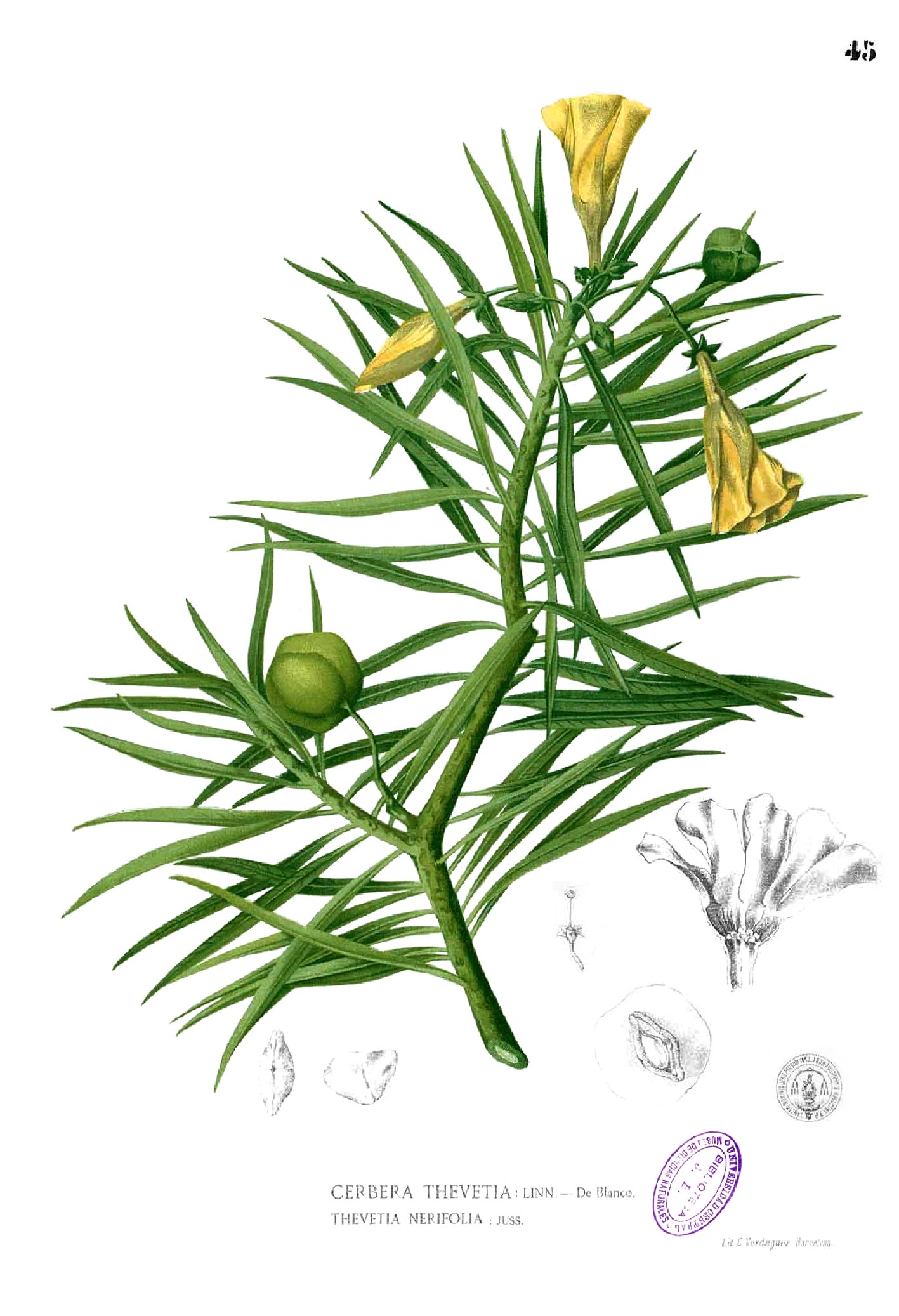Thevetia peruviana (Pers.) K. Schum. - Apocynaceae - yellow oleander, lucky nut, Gelber Oleander, Schellenbaum, Karibischer Oleander
Evergreen shrub or small tree, native to Central and South America, cultivated and naturalized elsewhere; flowers yellow or orange.
„The chemical composition of a volatile concentrate of the flowers of Thevetia peruviana and Allamanda cathartica were analyzed by GC/MS. The main volatile components identified in the flowers of T. peruviana were palmitic acid (22.9%), (E)-β-ionone (17.2%) and 1,8-cineole (10.6%).“
[Volatiles from Flowers of Thevetia peruviana (Pers.) K. Schum. and Allamanda cathartics Linn.(Apocynaceae)., Maia, J. G. S., Zoghbi, M. D. G. B., Andrade, E. H. A., Carreira, L. M. M.,Journal of essential oil Research, Vol.12(3), 2000, 322-324]
„The yellow oleander tree (Thevetia peruviana, previously T. neriifolia) is common through much of the tropics and subtropics. Poisonings are reported widely, but it is only in South Asia that ingestion of oleander seeds has become a popular means of self harm. Each year there are tens of thousands of yellow oleander poisoning cases in South Asia and probably hundreds of deaths, given the mortality of 4-10%. Many cardenolides have been identified in yellow oleander, predominantly thevetin A and B, but also peruvoside, neriifolin, thevetoxin, ruvoside, and theveridoside. These cardenolides are structurally similar to the digitalis cardenolides derived from foxglove. Despite this similarity, individual cardenolides vary widely in their pharmacokinetic properties.“
[Pharmacokinetics of digoxin cross-reacting substances in patients with acute yellow Oleander (Thevetia peruviana) poisoning, including the effect of activated charcoal., Roberts, D. M., Southcott, E., Potter, J. M., Roberts, M. S., Eddleston, M., Buckley, N. A.,Therapeutic drug monitoring, Vol.28(6), 2006, 784] http://www.ncbi.nlm.nih.gov/pmc/articles/PMC2296884/
